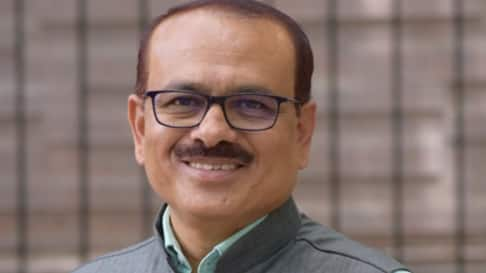India’s rare disease policy covers only 63 conditions, with limited funding and delayed treatment. In contrast, countries like Russia and the UK offer structured care and better access.

Prasanna Shirol, CEO, Co-founder and Executive Director of the Organization for Rare Diseases India (ORDI)
Shahid Akhter, Consulting Editor, FEHealthcare, talks to Prasanna Shirol, CEO, Co-founder and Executive Director of the Organization for Rare Diseases India (ORDI), to understand the current landscape, challenges, and future of rare disease care in India.
What is the current status of India’s policy on rare diseases and its coverage for patients?
We have had a national policy for rare diseases in India since 2021 but effectively started treating patients in 2023. The policy is divided into three groups. Group one are those conditions that are affected by one-time treatments, such as bone marrow, renal, liver transplantation, etc. Group two are those conditions that involve lesser cost of treatment. Group three is for those conditions where there is a definitive treatment but it is very costly, where the treatment cost varies from 50 lakh rupees per year per person to one crore.
To be given lifelong care, the budget under the policy is only 50 lakh rupees per person one time for existing diseases. So this takes care of both group one and group two to a certain extent. The main challenge lies in group three because 50 lakh rupees is sufficient only for six months to one year based on the condition.
Moreover, we have only 63 conditions included in the current disease policy for treatment. And there are only 13 centers of excellence for rare diseases where patients have to go and take treatment.
The policy is based on the advocacy from the groups but it does not include other conditions as of now. And the policy is focused on those conditions where there is an FDA-approved treatment and where there is knowledge about the efficacy of the treatment. There are only 63 conditions. However, for other conditions, there is an FDA-approved treatment, but not available in India, or the drug is not registered in India.
Apart from the 63 conditions, even the supportive care is not part of this policy. I think it may take a long time to include these conditions.
What are the key challenges in the implementation of India’s rare disease policy at the treatment centers?
The first is the actual policy's implementation throughout India. As in the case of these thirteen centers, some of the centers are under state governments, and the rest under the care of the central government. Then, under the policy, the money has to get released from the central government to this COE account. There is also a challenge in the procurement of the drugs.
There is a difference of treatment given by each center. There is no transparency. Then there is a lot of delay in treating the patient after registration. Further, we do not know how many patients are being treated. At times, we have to wait for six months to one year for the treatment to commence.
We don't know when the treatment will start because there is a delay in the procurement of the medicine. And then another major challenge is lack of proper infrastructure or manpower support. It is still mostly a one-man army in the center of excellence. So one doctor or a small team has to do many things that they are not able to cater to. This leads to a delay in support and treatment.
What does rare disease care look like in other countries?
The situation outside India is slightly better because in most of the countries they have a policy, or even if they do not have a policy, they have a treatment protocol. And also there is an insurance model available. For example, in the NHS, in the UK and America, there is insurance available to the patients, and treatment is mostly taken care of; only a few treatments, which are very exorbitant and very new, are under consideration, but there are absolutely no issues with treatment and many other major important things.
In India, the initial appointments have to come out of pocket expenses. We do not have any insurance, Govt. Support, Diagnostic Support. All these are taken care of elsewhere. And another important factor in rare disease is the supportive care and long-term management and rehabilitation, which very beautifully takes care of the quality of life.
However, in India everything is missing. If you have to quote an example, Russia has a system called Circle of Kindness. It is a foundation created by the government where 2% of the taxes are paid by individuals who earn more than 5 million. Can we have similar arrangements like circle of kindness? And that is a huge amount of money created by President Putin himself. Under that, everything is completely free: hospitalization and BMT treatment. I think here also in India, we have the CSR and the government also talks about crowd funding in the policy.
By continuing you agree to our Privacy Policy & Terms & Conditions
